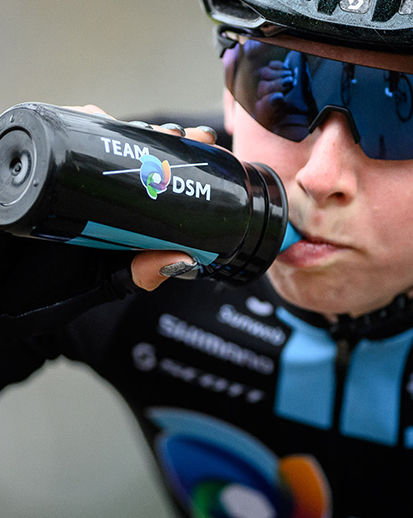Employee engagement
As a responsible organization, we work hard to offer an employee experience where everyone can feel safe, valued and included, and where every employee can offer their unique contribution. An engaged workforce is essential for our organization to have impact and deliver on our purpose, and engaging with our employees in a year such as 2020 was crucial. We did so in a variety of ways, with online webcasts, virtual family days and employee events, regular newsletters and regional events with our Co-CEOs, and executive calls and annual conference.
|
|
Aspiration |
|
2020 |
|
2019 |
||||
|
|
|
|
|
|
|
||||
Engagement Index1 |
|
75% by 2020 |
|
76% |
|
74% |
||||
Participation Rate |
|
|
|
92% |
|
92% |
||||
|
||||||||||
To measure our success and better understand how and where we can improve — as well as to track the impact of internal and external forces and changes — we monitor our employee engagement and well-being through a variety of surveys and ‘check-ins’. In 2020, these included our coronavirus Pulse Checks, our Employee Engagement Survey (EES), a specific integration survey following our acquisition of Erber Group, a recurring Fit for Growth follow-up survey, and an inclusion survey in Latin America. Data from all these surveys enables us to continue to improve our employee experience.
Further to this, we employed additional communication efforts to keep employees informed and engaged. These included chat sessions with the Co-CEOs and regional, virtual discussion sessions in conjunction with the Culture launch, also with the involvement of the Co-CEOs.
The Employee Engagement Survey
Our annual Employee Engagement Survey generates high-quality information that helps us understand how our employees feel at work, where we need to improve our employee experience and what solutions we can implement. The responses we receive enable us to initiate fruitful conversations and lead to concrete positive changes in our workplace.
In 2020, managers whose team included five or more survey respondents were eligible to receive specific team reports online; this amounted to more than 1,900 managers (an increase of 470 compared to 2019). To help managers share results with their teams, lead conversations and agree actions, training and support were available from local engagement champions as well as P&O and communications colleagues.
How we measure Employee Engagement
We measure four engagement attributes: commitment, pride, advocacy and satisfaction. The 2020 EES retained the structure and content of the previous survey, comprising questions on safety, engagement, management, inclusion and other key themes, but we also introduced three new questions that were specific to each business group. This meant our business groups received more targeted insights into employee engagement as well as allowing us to identify topics that we can investigate further in future surveys. The EES also offered space for employees to provide comments: 39,400 comments were received in 2020.
Engagement levels remain high
In 2020, the survey was sent to all employees (excluding contractors) and was available in 22 languages. We saw a response rate of 92%, equal to the highest recorded rate (in 2019) since the first edition of the survey in 2007.
Overall employee engagement increased by two percentage points to 76%, and all our comparable questions and indexes saw an increase. We made progress in our 2019 focus areas: Talent rose from 63% in 2019 to 67% in 2020 (including an improvement on the question relating to learning and development opportunities from 68% to 74%); and Inclusion from 72% to 75%. We also improved our already high Safety score (from 91% to 93%). The Strategy question on employees’ perspectives of the company’s ‘promising future’ increased from 79% to 81%.
Above all, the results underline the positive effects of our active efforts to maintain high levels of engagement during the pandemic through strong and clear communication, new work flexibility and more visible leadership. Our targeted engagement improvement programs have also had a positive effect according to the received responses, with improved scores seen in some of the units that previously received low scores.
Identifying and addressing areas for improvement
Based on the survey results, our overall focus areas for 2021 are Talent, Inclusion, Well-being and Management.
With regard to Talent, despite improved scores in 2020, we must continue to apply our efforts in several key areas. These include meeting our employees’ career development and learning expectations, continuing to build an inclusive work environment, safeguarding employee well-being through ‘Next Normal’ working patterns and integrating people-centric management and leadership practices.
In the area of Inclusion, we will continue to work on creating inclusive environments and creating stronger trust that diverse perspectives are valued for women in senior management positions. The continued activation of our Inclusion and Diversity Strategy plans, including ‘Brighter Together’, support for employee resource group (ERG)-led programs, and embedding ‘Next Normal’ rituals for inclusive working, will be part of this continued inclusion effort.
For Well-being, the ‘Next Normal’ working patterns, combined with ongoing COVID-19 health uncertainties require a responsive focus on employee well-being. In this area, we plan to further investigate well-being issues (included for example in the COVID-19 pulse survey) and the setup of a ‘Sustainable Performance’ program.
Finally, in the Management focus area, the results in 2020 indicate the positive effects of manager-focused development. Building on this foundation, we will work to embed good practices into DSM people management everywhere. In this way, we will continue to roll out management skills in areas such as feedback, ‘courageous conversations’, and team development, and use the change in performance management behaviors to accelerate a positive company culture.







